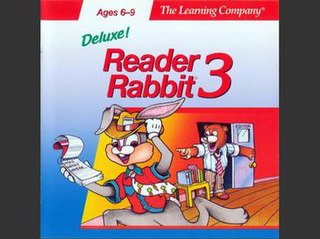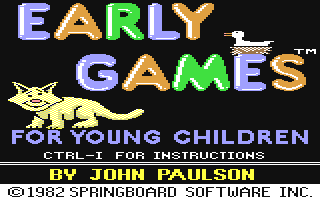
Máximo Antonio del Rosario, commonly known as Toño Rosario, is a Grammy Award nominee musician, best known for his role of bandleader of Merengue music act Los Hermanos Rosario. In 1990, he started his successful solo career receiving gold and platinum certifications.

Wrath of the Gods is a 1994 adventure-style computer game. It makes use of digitised backgrounds and sprites. The story is based on concepts and characters from Greek mythology. Billboard called it a "landmark effort" in the realm of live-action games.

Los Homerun-es is a compilation album and fifth overall of Reggaeton recording artist Daddy Yankee. It came before Yankee's mainstream debut, Barrio Fino. This album releases Daddy Yankee's hits from the 1990s to 2003. This album was released on an independent record label on February 28, 2003. Following the success of Barrio Fino, the album was re-released on 2005. Even though it was an independent album, it featured other huge reggaeton artists, like Nicky Jam, Don Omar, Julio Voltio. Some songs were released with DJ Playero.
Flip Records is a Californian record label, started by Jordan Schur in April 1994. The label is known for the signing of popular nu metal bands such as Limp Bizkit, Dope and Cold. The label has sold 70 million albums worldwide.

"Summer Holiday" is a song recorded by Cliff Richard and the Shadows, written by rhythm guitarist Bruce Welch and drummer Brian Bennett. It is taken from the film of the same name, and was released as the second single from the film in February 1963. It went to number one in the UK Singles Chart for a total of two weeks. After that, the Shadows' instrumental "Foot Tapper"—also from the same film—took over the top spot for one week, before "Summer Holiday" returned to the top spot for one further week. The track is one of Richard's best known titles and it remains a staple of his live shows. It was one of six hits Richard performed at his spontaneous gig at the 1996 Wimbledon Championships when rain stopped the tennis.

Reader Rabbit 3 is a 1993 educational video game, part of the Reader Rabbit franchise. It was released for DOS that year, but was released for Windows and Macintosh in 1994 under the title "Reader Rabbit 3 Deluxe!".

"Warmth of Your Eyes" is a song written by American singer-songwriter Billie Hughes. It was recorded by Lazarus on the band's debut eponymous Lazarus album and released as a single in 1972 by Bearsville Records, distributed by Warner Bros. Records Inc.
Carlton Records was a record label based in New York City that was formed by former RCA Records A&R head Joe Carlton in 1957. Guaranteed Records was a sublabel of Carlton. Carlton Records lasted until 1964. The most notable recording artists on Carlton included Jack Scott, Anita Bryant, and Paul Evans. The country music superstar Kenny Rogers released two of his early singles on the label, namely "That Crazy Feeling" and "For you alone."

Snooper Troops is a series of two 1982 adventure/educational video games developed by Spinnaker Software and published by Computer Learning Connection. They were released for the Apple II, Atari 8-bit computers, Commodore 64, and MS-DOS. The first case was entitled Snooper Troops: Case #1: The Granite Point Ghost and the second case entitled Snooper Troops: Case #2 - The Case of the Disappearing Dolphin was released later that year.

Early Games is a 1982 educational video game by Counterpoint Software and Springboard Software, designed by John Paulson. The game contain a series of educational mini-games targeted at preschoolers and designed to teach basic math, language, and logic skills. It was part of the Skill Builder series, along with Fraction Factory, Match Maker, and Piece of Cake.

Kids on Keys is a 1983 educational video game from Spinnaker Software designed by Freeda Lekkerkerker.

Math Blaster! is a 1983 educational video game, and the first entry in the "Math Blaster" series within the Blaster Learning System created by Davidson & Associates. The game was developed by former educator Jan Davidson. It would be revised and ported to newer hardware and operating systems, with enhanced versions rebranded as Math Blaster Plus! (1987), followed by New Math Blaster Plus! (1990). A full redesign was done in 1993 as Math Blaster Episode I: In Search of Spot and again in 1996 as Mega Math Blaster.

Reader Rabbit is a 1984 educational video game and the first of the long-running Reader Rabbit edutainment series. It was made by The Learning Company for Apple II and later for other computers. It supports the KoalaPad graphics tablet. The Connelley Group helped with the Atari 8-bit computers conversion in 1984. A Talking version was developed for the Apple IIGS in 1989. An enhanced version was released for MS-DOS -n 1991. A Deluxe version was released in 1994 for Mac and Windows 3.x. In 1997, the game was remade for Windows and Macintosh under the title "Reader Rabbit's Reading 1".
Shep Crawford is a Grammy Award-winning American R&B and gospel musician, songwriter, and record producer best known for Whitney Houston's "Same Script, Different Cast", Deborah Cox's "Nobody's Supposed to Be Here", Tamia's "Stranger in My House", Sisqó's "Incomplete", and Kelly Price's "As We Lay". He is the founder and pastor of The Experience Christian Ministries in Los Angeles, California.
"The Mosquito" is a song by American rock band the Doors from their 1972 album Full Circle. In the same year it was released as a single. Billboard called it an "unusual off beat disc" with a "clever Latin beat". Record World called it an "infectious ditty with calypso feel." The vocal is by Robby Krieger.

Piper is a 1995 educational interactive movie video game developed by Splash Studios. The game is essentially a Western take on the legend of the Pied Piper of Hamelin, albeit with a less spiteful Piper.
The Search Series is a five-game series of educational video games by Tom Snyder Productions and published by McGraw-Hill Education in 1980. It runs on either Apple II or TRS-80 Models I and III.
Auto Test is a 1954 educational electro-mechanical game that uses a video projector. Released by Capitol Projector, it was a driving test simulation that used film reel to project pre-recorded driving video footage, awarding the player points for making correct decisions as the footage is played. It was not a racing game, but was a driving simulation designed for educational purposes.
Lu Ann Simms was an American singer. She released pop 45s on Columbia Records between 1952 and 1957, Jubilee Records between 1957 and 1960, Top Rank Records in 1960, Vee-Jay Records in 1963 and Wand Records in 1965. She also released a handful of children's records on Columbia Records between 1953 and 1955. Her recordings were licensed by such record labels as Philips Records and Coronet Records for release outside the United States.

The discography of American band Biohazard includes nine studio albums, two live albums, two demo albums, one compilation album, 15 singles and 13 music videos.












